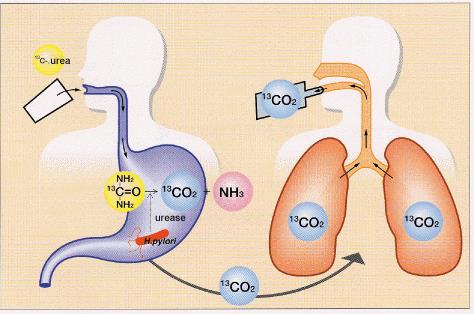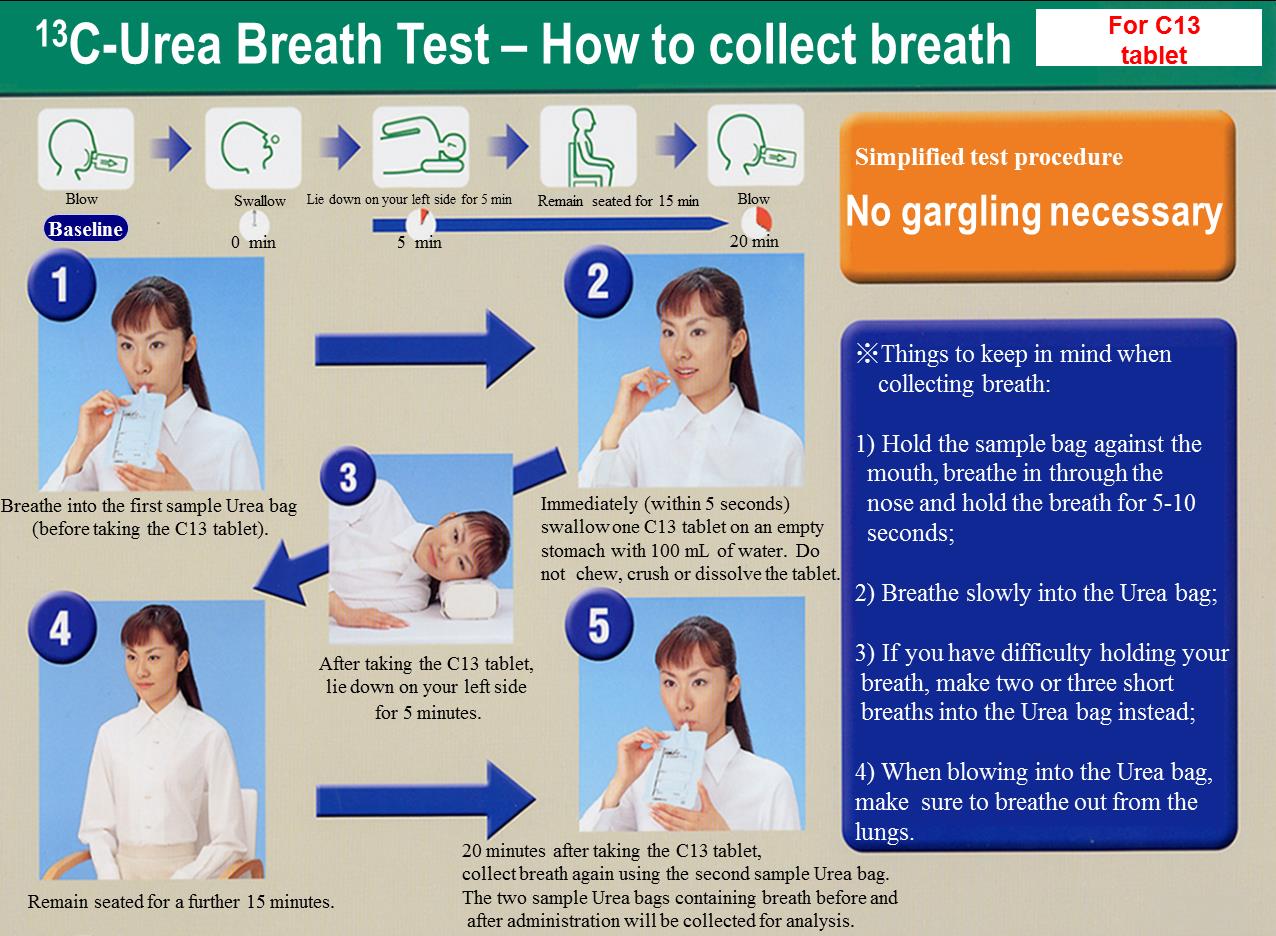H. pylori is a spiral bacterium implicated in gastritis, gastric ulcer, and peptic ulcer disease.
The 13C-urea breath test breath test is a rapid noninvasive diagnostic procedure used to identify infections by Helicobacter pylori (H. pylori) and to confirm eradication after treatment. It is based upon the ability of H. pylori to convert urea to ammonia and carbon dioxide.
This “point-of-care” testing is now possible at FV Hospital.
HOW DO I PREPARE FOR A UREA BREATH TEST?
13C is a nonradioactive and harmless isotope, and it can be safely used in children and women of childbearing age but is not recommended for:
- Pregnant women and breastfeeding women
- Children under three years old.
You will be required to fast for two hours before the test. This means:
- No food or fluids;
- Do not consume soft drinks or even water;
- Do not smoke.
You should take only the medications approved by your doctor on the day of the procedure. Prior to the test, your doctor will ask you to stop taking antibiotics and the following anti-acid medications which decrease the amount of urease in the stomach:
- Antibiotics – at least four weeks before the test;
- Bismuth preparations – at least two weeks before the test (bismuth tripotassium dicitrate – Inbionetdesnol® or Ducas®);
- Proton pump inhibitors – at least two weeks before the test, such as esomeprazol (Nexium®), omeprazole (Mepraz®, Losec®), pantoprazole (Pantoloc®), rabeprazol (Pariet®);
- Histamine H2-receptor antagonists – at least one day before the test, such as ranitidine (Zantac®, Ratidin®);
- Antacids – at least one day before the test, such as aluminium phosphate (Phosphalugel®), aluminium hydroxide + magnesium hydroxide (Maalox®), rebamipide (Mucosta®), sodium alginate + sodium bicarbonate + calcium carbonate (Gaviscon®), sodium hydrocarbonate (Natri Bicarbonat®).
WHAT HAPPENS DURING THE UREA BREATH TEST?

During the urea breath test:
- A nurse will explain the procedure and answer any questions you may have; • You will breath into the first sample bag;
- Then, you will swallow a tablet of urea labelled with nonradioactive isotope carbon 13 (13C-labelled urea) and lie down on your left side for five minutes;
- After, you will have to remain seated for a further 15 minutes;
- 20 minutes after taking the tablet, the nurse will collect breath again using the second sample bag.
HOW DOES THE TEST WORK?
If present in the gastric environment, H. pylori will breakdown the carbon-labelled urea into carbon dioxide (CO2) and ammonia. Isotope-labelled 13CO2 is exhaled through the lungs and can be measured in the exhaled air.
WHAT HAPPENS AFTER THE UREA BREATH TEST?
After the urea breath test:
- Your two sample bags containing breath before and after administration will be collected for analysis;
- You may resume your normal activities;
- You may resume your normal diet, unless you are scheduled for other tests that require dietary restrictions.
WHAT ABOUT THE RESULTS AND THE TREATMENT?

Results are obtained immediately and will be communicated to you by your gastro-enterologist who will decide the appropriate treatment if it is required.




